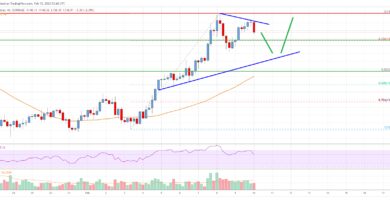A Stablecoin Is Facing The Strife For Tougher Oversight
To make it easier to understand, the stablecoin market is a crucial link between the crypto and traditional, fiat currencies. Recently it is facing calls for tougher oversight with regulations on both sides that prevents the development of the digital assets left behind. The stable coins are the safe harbors for the traders on the financial market and this is the way they can secure their funds, as well as market funds, are used by the investor to secure their funds.
Stablecoins’ potential position as a less traceable form of money as well as a hodgepodge of disclosure rules and a general lack of consumer safeguards have fueled calls for tighter regulation as the market has grown in tandem with the wider digital asset industry.
Stablecoins, which are fixed to traditional currencies, commodities, or other digital assets, and the reason is to limit volatility, are being scrutinized by policymakers in countries such as the United States, the United Kingdom, and continental Europe. The majority of stablecoin issuers claim that their coins are completely backed by reserves, which are generally fiat currencies of cryptocurrencies. Digital currency, whose value is permanently tied to or stabilized against traditional currency such as the dollar, still faces significant legal issues, as well as an important source of market, liquidity, and credit risk.
The European Commission’s Markets in Crypto-Assets proposal and the UK Treasury’s consultation on stablecoins, both of which urge for further regulation in the industry and empathize with the ambiguity about the status of stablecoins, according to Harry Eddis, a partner at law firms. A lot of regulatory monitoring and behavior norms fall away from it as a stablecoin falls into the unregulated or e-money category, which is why we are seeing a lot of regulators attempting to establish regulation.
The Financial Action Taskforce, which established worldwide rules on money laundering and terrorism financing, presented a draft report on stablecoins to the G20 group of countries in June. It was suggested that procedures for asset stabilization might provide opportunities for market manipulation. The regulatory discussion was activated as many crypto investors examine Tether closely, which represents the largest stablecoin in circulation, with around $56 billion in circulation. The stablecoin which is pegged at $1, is in the spotlight partially because it has continued to operate and develop swiftly in several countries despite a reprimand by New York’s attorney general.
Tether claims that it’s no trues that the virtual currency was always supported by US dollars, which the state attorney general claimed in February to be the truth. Tether and its subsidiary Bitfinex were fined $18.5 million for false reserve declarations and charges that they covered up substantial financial losses during a 2018 event. The companies were also compelled to provide quarterly reports detailing the kind of assets to support Tether currency, as well as being forbidden from operating in New York. These firms masked the underlying danger that investors faced, and they were run by unlicensed and unregulated persons and institutions operating in the financial system’s darkest recesses. Tether currently claims that its currency is fully guaranteed by the company’s reserves but it has released little specifics on the assets it has other than to note that they can range from traditional currency to receivable from the tether to third parties loans.
Tether and several other major stablecoin issuers, including USD Coin backer Circle, publish attestations from third-party accountants to give some amount of transparency into their holdings. However, in terms of what they reveal, these statements might differ significantly from typical audits, with significant variation amongst organizations. The circle remains dedicated to high standards of openness and accountability for USD Coin which is going to be introduced to society in summer 2021 as the most trusted dollar digital currency in circulation. It would build customer trust and help the sector develop more responsibly if corporations followed a more unified approach.
Central bank digital currencies are considered to be some kind of threat to the stable coins, which would offer a digital payment system separated from commercial banks and payment providers. Individuals might have digital accounts at a central bank or own a digital token, according to many ideas.
Source: Read Full Article


